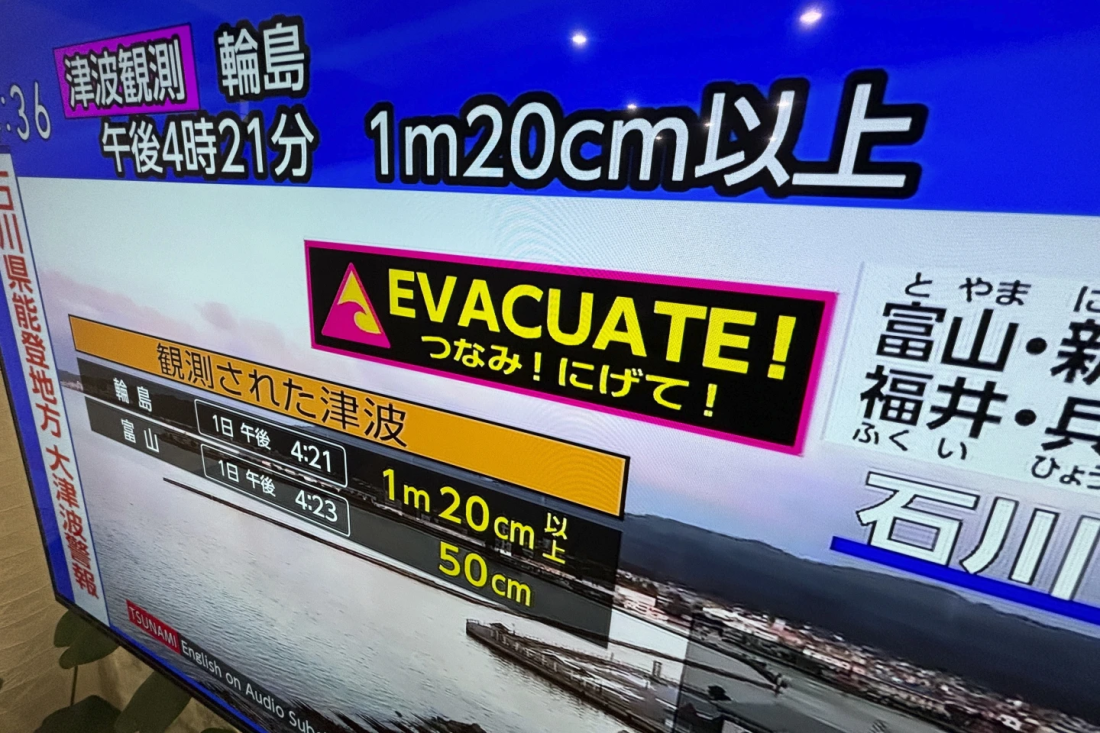
In the wake of a series of significant earthquakes, Japan initially raised its highest-level tsunami alert on Monday. The largest quake, registering a magnitude of 7.6, triggered fires and building collapses along the west coast of Honshu, the country’s main island. The extent of casualties and injuries remains unclear.
The Japan Meteorological Agency reported over a dozen strong quakes in the Japan Sea off the coast of Ishikawa and nearby prefectures, commencing shortly after 4 p.m. local time. While the tsunami warning was eventually downgraded to a regular alert, cautionary measures persist as waves of up to 3 meters (10 feet) remain a possibility, coupled with potential aftershocks in the coming days.
At least six homes sustained damage, with occupants trapped inside, according to government spokesman Yoshimasa Hayashi. A fire broke out in Wajima city, Ishikawa Prefecture, and over 30,000 households experienced power outages.
Initially, the meteorological agency issued a major tsunami warning for Ishikawa and lower-level warnings for the western coast of Honshu, as well as the northernmost main island, Hokkaido. Hayashi emphasized the urgency of evacuating coastal areas, stressing, “Every minute counts. Please evacuate to a safe area immediately.”
The warning was later revised to a regular tsunami alert, still indicating the potential for waves of significant height. Aftershocks are anticipated in the region in the days ahead.
Japanese public broadcaster NHK TV initially projected water torrents reaching as high as 5 meters (16.5 feet). The network continued to broadcast warnings as aftershocks rattled the area. Evacuees were directed to stadiums, where they may remain for days to ensure their safety.
As people rushed to retrieve belongings, authorities cautioned against returning too soon, as there have been instances of individuals being swept away even hours after initial evacuation warnings.
Media footage depicted chaotic scenes, with people running through streets, fires erupting in residential areas, and significant infrastructure damage. Some sustained minor injuries during the evacuation process.
As rescue efforts unfold, Japan’s military is actively engaged, and emergency services are on high alert. Bullet trains in the affected area were temporarily halted, and parts of a highway were closed. Water pipes burst, and certain cell phone services in the region experienced disruptions.
The Meteorological Agency warned of the potential for more major quakes in the region over the next week, particularly in the coming days. The heightened seismic activity poses risks of landslides and further structural damage.
Tsunami warnings were also issued for parts of North Korea and Russia. The Japanese government has established a special emergency center to rapidly disseminate information to residents and coordinate safety measures.
U.S. President Joe Biden expressed readiness to provide assistance, stating that his administration is in contact with Japanese officials. While Japan is accustomed to seismic events, Monday’s tsunami alert marked the first of its magnitude since the devastating quake and tsunami of March 2011, which led to nuclear plant meltdowns. Hayashi assured that nuclear plants in the affected area reported no irregularities, and radiation levels remained stable according to monitoring posts.










